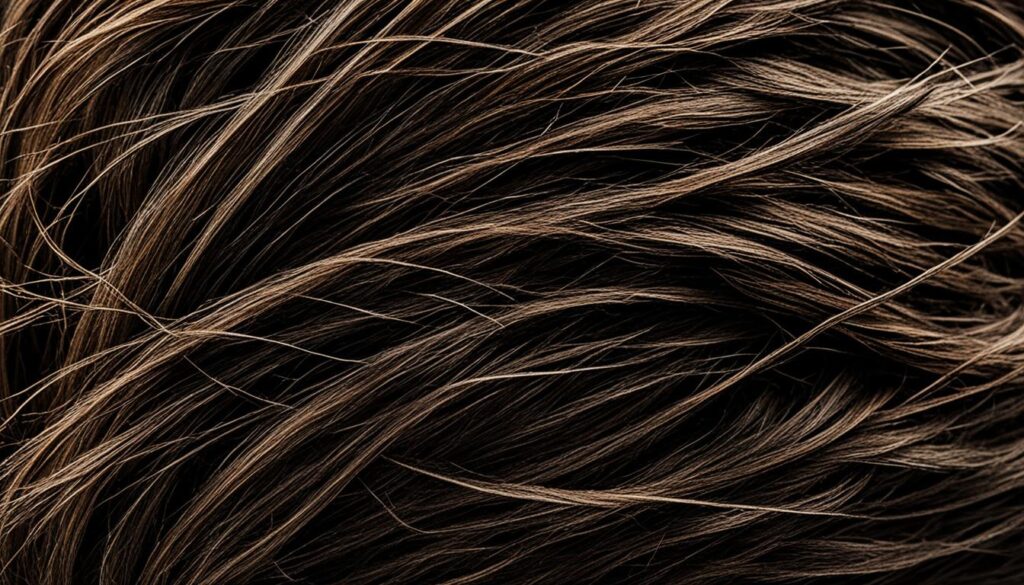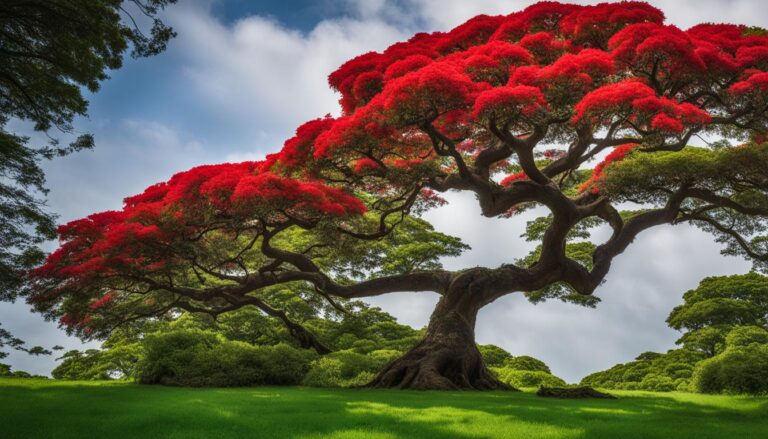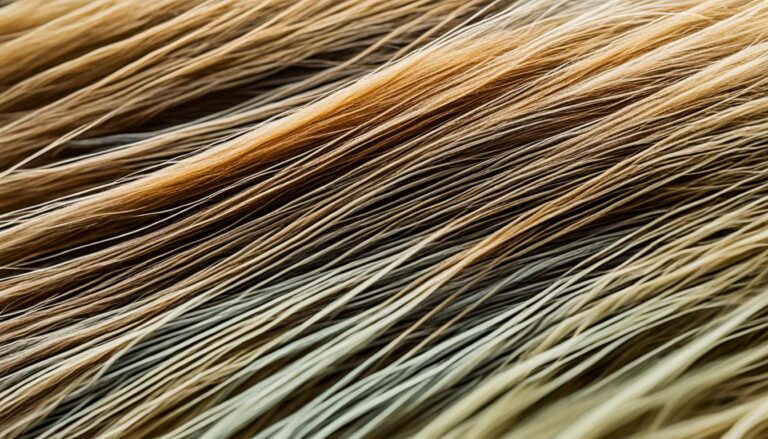What Hair Type Is the Hardest to Deal With?
Managing challenging hair can be a difficult task. If you’ve ever struggled with unmanageable, unruly hair, you’re not alone. Different hair types present their own unique set of challenges, requiring specific care and styling strategies to tame and maintain. In this article, we’ll explore some of the most difficult hair types to deal with and provide tips and solutions for managing them effectively.
Key Takeaways:
- Afro-textured hair is often considered the most difficult hair type to manage due to its tight curl pattern, high density, and tendency to dry out easily.
- Coarse hair is thicker and prone to frizz, requiring extra care and moisture to keep it healthy and styled.
- Fine hair is delicate and prone to breakage, necessitating gentle handling and lightweight products.
- Curly hair can be challenging to manage due to tangling and frizz, requiring regular conditioning and styling techniques.
- Thick hair can be heavy and difficult to style, necessitating regular trims and specific techniques to prevent it from becoming unmanageable.
Afro-Textured Hair
Afro-textured hair is known for its unique characteristics that make it the most difficult hair type to manage. The tight curl pattern, high density, and susceptibility to dryness pose challenges when it comes to maintaining its health and preventing breakage. However, Afro-textured hair is also incredibly versatile and can be styled in various ways, allowing for creative expression and individuality.
To effectively manage and care for Afro-textured hair, it is crucial to prioritize moisture and regular maintenance. Keeping the hair well-hydrated helps to prevent dryness, brittleness, and breakage. This can be achieved through deep conditioning treatments, moisturizing shampoos, and leave-in conditioners that cater specifically to Afro-textured hair.
Styling Afro-textured hair requires patience and gentle handling to avoid causing damage. Protective styles like braids, twists, and bantu knots can help minimize direct manipulation and reduce the risk of breakage. These styles also offer an opportunity for length retention and protect the hair from external factors that can contribute to damage.
Experimenting with different products and styling techniques is essential to find what works best for Afro-textured hair. Embracing natural textures and opting for low-manipulation styles can help maintain the health of the hair while showcasing its unique beauty.
| Product Type | Product Name | Benefits |
|---|---|---|
| Shampoo | SheaMoisture Jamaican Black Castor Oil Shampoo | Gently cleanses and promotes hair growth |
| Conditioner | Cantu Shea Butter Leave-In Conditioning Repair Cream | Moisturizes, strengthens, and prevents breakage |
| Deep Conditioner | Mielle Organics Babassu Oil & Mint Deep Conditioner | Provides intense hydration and strengthens the hair |
| Moisturizer | AfroShe Hair Milk | Hydrates, softens, and defines curls |
| Styling Gel | Camille Rose Curl Maker | Enhances curl definition and reduces frizz |
Coarse Hair
Coarse hair, characterized by its thicker strands and larger diameter, requires special care and attention when it comes to styling and managing. Due to its unique texture, coarse hair is more prone to frizz, dryness, and breakage.

When caring for coarse hair, it’s essential to focus on providing adequate moisture. This hair type tends to dry out easily, so using hydrating shampoos, conditioners, and deep conditioning treatments is crucial. Look for products specifically formulated for coarse or dry hair, as they often contain ingredients like shea butter, avocado oil, and coconut oil that help nourish and hydrate the hair.
Styling coarse hair can be a challenge, but with the right techniques, you can achieve the desired look. Here are a few tips:
- Use a wide-toothed comb or a detangling brush to gently work through the hair, starting from the ends and gradually moving upward to prevent breakage.
- Avoid using heat tools excessively, as they can further dry out the hair and cause damage. If you do use heat, always apply a heat protectant spray beforehand.
- Consider protective styles such as braids, twists, or updos to minimize manipulation and reduce the risk of breakage.
- Opt for products that provide both hold and moisture, such as leave-in conditioners or styling creams. These can help tame frizz and define curls while keeping the hair hydrated.
- Regularly trim the ends to prevent split ends, as coarse hair is more prone to damage.
By adopting a regular hair care routine that focuses on moisture and using appropriate styling techniques, you can manage and style your coarse hair effectively, keeping it healthy, vibrant, and beautiful.
Fine Hair
Fine hair can be a challenge to manage due to its delicate nature and tendency to break easily. However, with the right techniques and products, you can care for and style your fine hair effectively.
Caring for Fine Hair
To keep your fine hair healthy and minimize breakage, it’s important to handle it gently and use lightweight products that won’t weigh it down. Here are some tips for caring for fine hair:
- Use a gentle shampoo and conditioner specifically designed for fine hair. Look for products that add volume and provide moisture without weighing the hair down.
- Avoid using heavy styling products, as they can make your hair appear flat and greasy. Opt for lightweight mousses, gels, or sprays that provide hold without sacrificing volume.
- Be cautious with heat styling tools. Excessive heat can damage fine hair, so use a lower heat setting and apply a heat protectant spray before styling.
- Regularly trim your hair to remove split ends and keep it looking healthy. This will also prevent breakage and allow your hair to grow stronger.
- Be gentle when brushing or combing your hair to avoid causing unnecessary breakage. Start from the ends and work your way up to minimize tugging and pulling.
Styling Fine Hair
Styling fine hair can be challenging because it often lacks volume and can appear flat. However, with the right techniques and products, you can add volume and create beautiful styles. Here are some styling tips for fine hair:
- Use a volumizing mousse or spray at the roots to create lift and add body to your hair.
- Consider getting layers or a haircut that adds movement and texture to your hair. This can give the illusion of thicker, fuller hair.
- Avoid heavy, sleek styles that can make your hair appear flat. Instead, opt for tousled or textured hairstyles that add volume and create the illusion of thicker hair.
- Experiment with different styling techniques, such as teasing or backcombing the roots for added volume.
- Try using dry shampoo between washes to refresh your hair and add texture. This can help create volume and make styling easier.
Remember, finding the right products and techniques for your specific fine hair type may require some trial and error. Don’t be afraid to experiment and find what works best for you.
Expert Tip
“When caring for fine hair, less is often more. Use lightweight products, avoid excessive heat, and be gentle when brushing to keep your hair healthy and minimize breakage.” – Celebrity hairstylist, Lisa Smith
| Product | Benefits |
|---|---|
| Volumizing mousse | Adds lift and body to fine hair |
| Dry shampoo | Refreshes hair between washes and adds texture |
| Lightweight conditioner | Provides moisture without weighing the hair down |
| Volumizing spray | Creates volume at the roots |
Curly Hair
Managing curly hair can be a challenging task, especially due to its tendency to tangle and frizz, particularly in humid weather. However, with the right techniques and products, you can maintain the shape and definition of your curls while keeping them moisturized and healthy.
Here are some tips for managing, caring for, and styling your curly hair:
- Regular conditioning: Curly hair tends to be more prone to dryness. Therefore, it’s essential to use a moisturizing conditioner to hydrate your curls and prevent them from becoming brittle. Look for conditioners that are specifically formulated for curly hair and contain ingredients like shea butter or argan oil.
- Detangling with care: To avoid causing damage and breakage, gently detangle your curly hair using a wide-tooth comb or your fingers while it is still wet and coated with conditioner. Start from the bottom and work your way up, gradually removing any knots or tangles without pulling or yanking on the hair.
- Styling products: Choosing the right styling products can make a significant difference in how your curls look and behave. Opt for products that provide moisture, shine, and hold without weighing down your curls. This may include curl creams, gels, mousses, or serums.
- Minimal heat styling: Excessive heat can damage curly hair and cause frizz. Whenever possible, embrace your natural curls and limit the use of heat styling tools like flat irons or curling irons. If you do use heat, use a heat protectant spray beforehand and keep the temperature at a lower setting.
- Protective hairstyles: Consider incorporating protective hairstyles into your routine to minimize manipulation and reduce damage. This may include braids, twists, buns, or updos that keep your curls secure and protected.
“Curly hair is not a trend; it’s a lifestyle. Embrace the beauty of your curls and find joy in the uniqueness of each curl pattern.”
Remember, each curly hair type is unique, and it may take some trial and error to find the best techniques and products that work for you. Embrace the natural beauty of your curls, and with patience and proper care, you can have healthy, well-defined, and stylish curls.
Managing and Styling Thick Hair
If you have thick hair, you know that it can be a blessing and a challenge at the same time. While thick hair tends to have a lot of volume and looks luxurious, it can also be heavy and difficult to manage, especially when it’s long. However, with the right techniques and care, you can embrace and make the most of your thick locks.
Caring for Thick Hair
When it comes to caring for thick hair, one of the key factors is regular trimming. Because thick hair can become unmanageable and weighed down, getting regular trims every 6-8 weeks can help maintain a healthy and well-shaped style.
In addition to regular trims, it’s important to choose hair products that are specifically formulated for thick hair. Look for shampoos and conditioners that provide hydration without adding too much weight. Deep conditioning treatments once a week can also help nourish and moisturize your hair.
Another essential step in caring for thick hair is to avoid over-washing. While clean hair is important, washing your hair every day can strip away the natural oils that keep your hair moisturized. Instead, opt for washing every 2-3 days to maintain the natural balance of your hair.
Styling Tips for Thick Hair
Styling thick hair can be a fun and creative process. Here are some tips to help you manage and style your thick locks:
- Opt for layered haircuts to add movement and reduce bulkiness.
- Use a wide-toothed comb or a brush specifically designed for thick hair to detangle your locks gently.
- Apply a lightweight leave-in conditioner or a detangling spray to make styling easier.
- When blow-drying your hair, use a diffuser attachment to enhance your natural texture and minimize frizz.
- Experiment with different hairstyles, such as braids, ponytails, updos, or half-up, half-down styles, to find what works best for your hair.
Remember, finding the right products and techniques that work for your unique hair type may require some trial and error. Don’t be afraid to seek advice from a professional stylist who specializes in working with thick hair.

With proper care, attention, and patience, you can embrace the beauty of your thick hair and make it your crowning glory.
Conclusion
Managing difficult hair types can be a challenge, but with the right strategies and tips, you can achieve beautiful and manageable hair. Whether you have afro-textured hair, coarse hair, fine hair, curly hair, thick hair, wavy hair, damaged hair, chemically treated hair, gray hair, or thin hair, there are ways to style and care for your unique hair type.
Experimenting with different products and techniques is key to finding what works best for your hair. For afro-textured hair, focus on regular moisturizing, deep conditioning, and protective styling like braids and twists. Coarse hair benefits from lightweight, anti-frizz products and gentle detangling. Fine hair requires gentle handling, volumizing products, and avoiding heavy styling products that weigh it down.
To manage curly hair, prioritize regular conditioning, defining products, and protective styles to prevent tangling and frizz. For thick hair, frequent trimming and strategic layering can help manage its volume and weight. Regardless of your hair type, moisture is essential for maintaining its health, so remember to use moisturizing products and techniques, such as using leave-in conditioners or oils.
By understanding your hair’s unique characteristics and implementing the right strategies and tips, you can overcome the challenges of managing difficult hair. Embrace your hair’s natural texture and experiment with different styles to express your individuality. With the proper care and styling, your hair can be beautiful and manageable, enhancing your overall confidence and style.
FAQ
What hair type is the hardest to deal with?
The most difficult hair type to manage is afro-textured hair.
What are the characteristics of afro-textured hair?
Afro-textured hair has a tight curl pattern, high density, and a tendency to dry out easily.
How should I care for and style afro-textured hair?
Afro-textured hair requires a lot of moisture and regular care to maintain its health and prevent breakage. It can be styled in a wide range of ways, including braids, twists, afros, and various protective styles.
What are the challenges of managing coarse hair?
Coarse hair is thicker and has a larger diameter than other hair types, making it more difficult to style and prone to frizz. It can also be more resistant to chemical treatments like coloring or relaxing. Coarse hair tends to be more prone to dryness, frizz, and breakage, requiring extra care and attention in terms of moisture and styling techniques.
How should I care for and style coarse hair?
Coarse hair requires extra care and attention in terms of moisture and styling techniques. Regular conditioning and the use of appropriate products can help manage dryness, frizz, and breakage. It’s important to avoid excessive heat and use protective styles when possible.
What are the challenges of managing fine hair?
Fine hair is delicate and prone to breakage, making it difficult to style and maintain volume. It requires gentle handling and lightweight products to prevent damage.
How should I care for and style fine hair?
Fine hair requires gentle handling and the use of lightweight products to prevent damage. Avoid using heavy styling products that can weigh the hair down. Adding volume can be achieved through the use of volumizing products, blow-drying with a round brush, or using hot tools.
What are the challenges of managing curly hair?
Curly hair can be difficult to manage due to its tendency to tangle and frizz, especially in humid weather. It requires regular conditioning and styling products to maintain its shape and definition.
How should I care for and style curly hair?
Curly hair requires regular conditioning and the use of styling products to maintain its shape and definition. It’s important to detangle gently, using a wide-toothed comb or fingers, and avoid brushing when dry. The use of leave-in conditioners, curl-enhancing gels, and diffusing with a blow dryer can help achieve defined curls.
What are the challenges of managing thick hair?
Thick hair can be heavy and difficult to manage, especially when it’s long. It requires regular trimming and styling to prevent it from becoming unmanageable.
How should I care for and style thick hair?
Thick hair requires regular trimming to maintain its shape and prevent it from becoming unmanageable. Using lightweight hair care products, such as mousses or serums, can help reduce heaviness. Styling techniques such as layering and using heat styling tools can also help manage thick hair.
What are some tips for managing difficult hair types?
Dealing with difficult hair types requires understanding their unique characteristics and adapting your hair care and styling routine accordingly. Experiment with different products, techniques, and hairstyles to find what works best for your specific hair type. Remember to prioritize moisture, proper care, and gentle handling to maintain the health and beauty of your hair.






